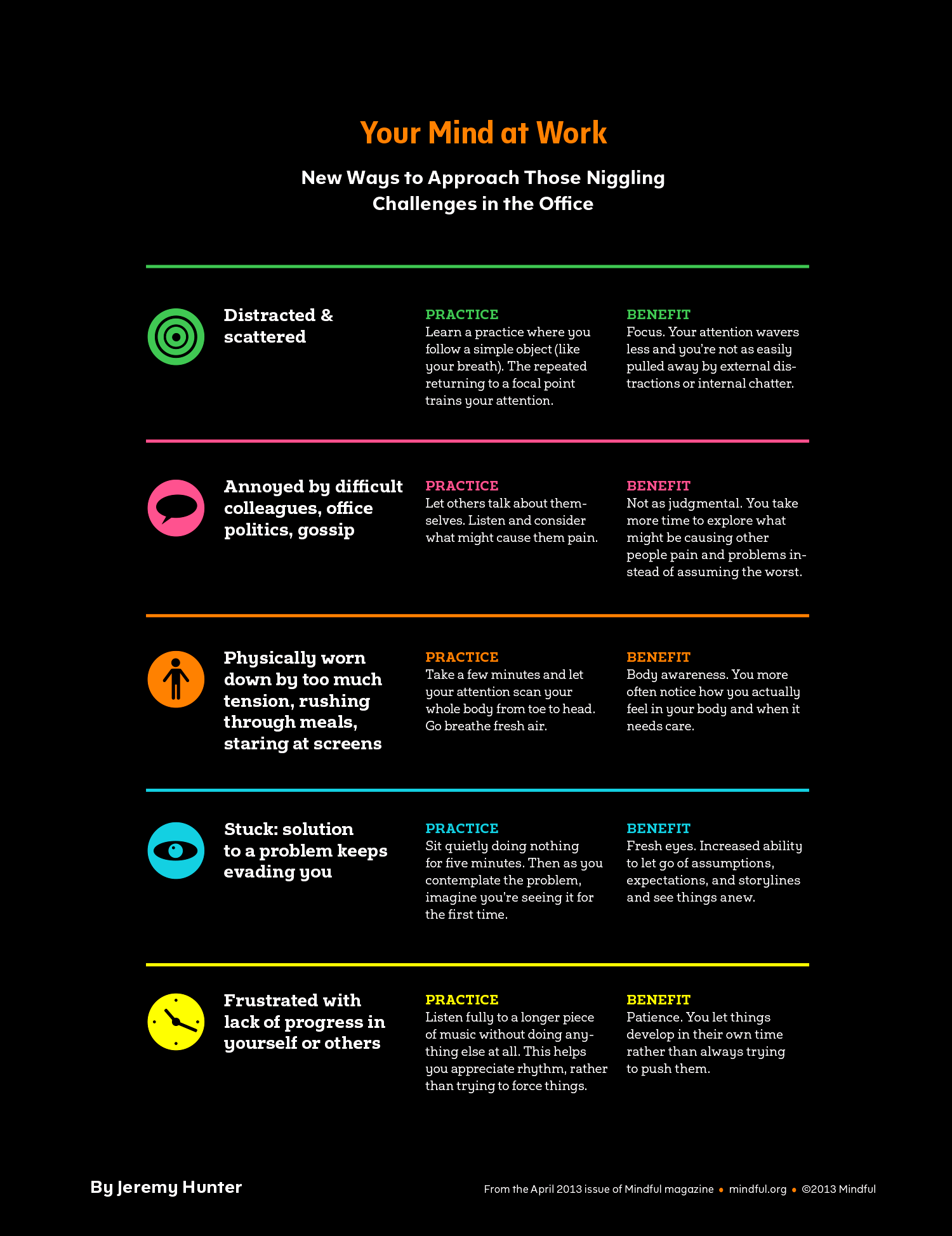

Distracted and scattered
PRACTICE: Learn a practice where you follow a simple object (like your breath). The repeated returning to a focal point trains your attention.
BENEFIT: Focus. Your attention wavers less and you’re not as easily pulled away by external distractions or internal chatter.

Annoyed by difficult colleagues, office politics, gossip
PRACTICE: Let others talk about themselves. Listen and consider what might cause them pain.
BENEFIT: Not as judgemental. You take more time to explore what might be causing other people pain and problems instead of assuming the worst.

Physically worn down by too much tension, rushing through meals, staring at screens
PRACTICE: Take a few minutes and let your attention scan your whole body from toe to head. Go breathe fresh air.
BENEFIT: Body awareness. You more often notice how you actually feel in your body and when it needs care.

Stuck: solution to a problem keeps evading you
PRACTICE: Sit quietly doing nothing for five minutes. Then as you contemplate the problem, imagine you’re seeing it for the first time.
BENEFIT: Fresh eyes. Increased ability to let go of assumptions, expectations, and storylines and see things anew.

Frustrated with lack of progress in yourself or others
PRACTICE: Listen fully to a longer piece of music without doing anything else at all. This helps you appreciate rhythm, rather than trying to force things.
BENEFIT: Patience. You let things develop in their own time rather than always trying to push them.
This article also appears in the April 2013 issue of Mindful magazine as part of a package titled “Is Mindfulness Good for Business?”







